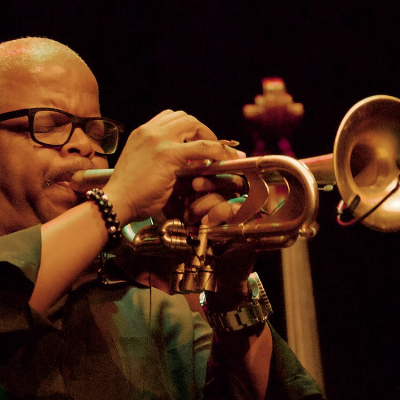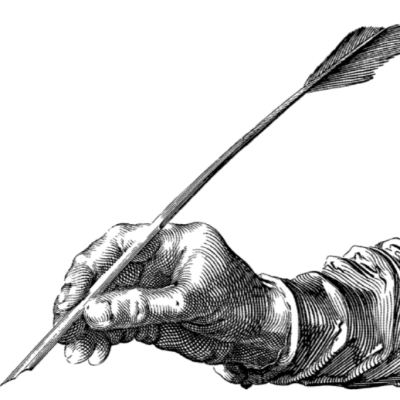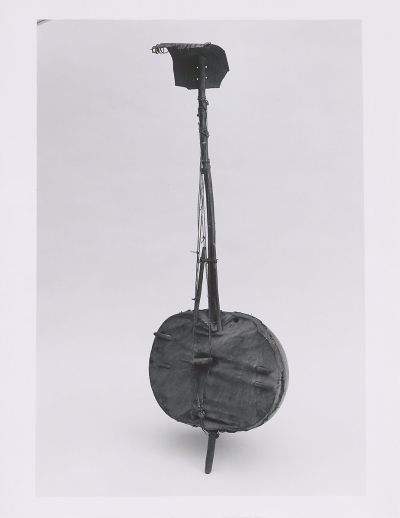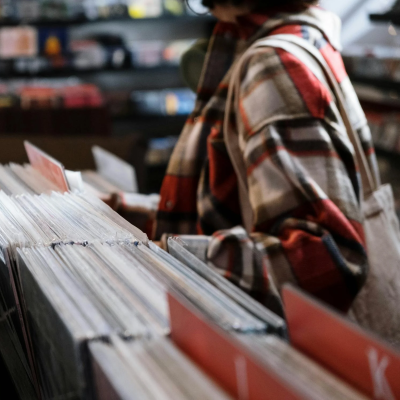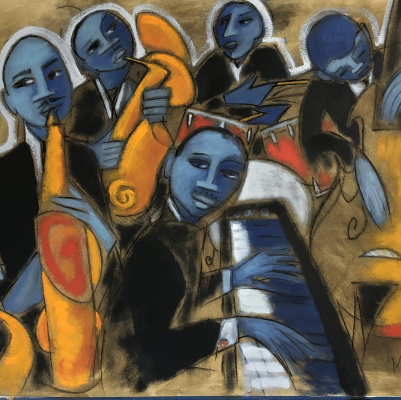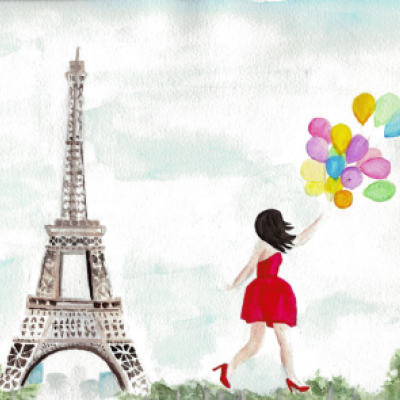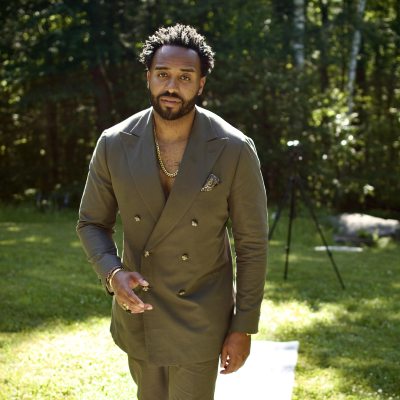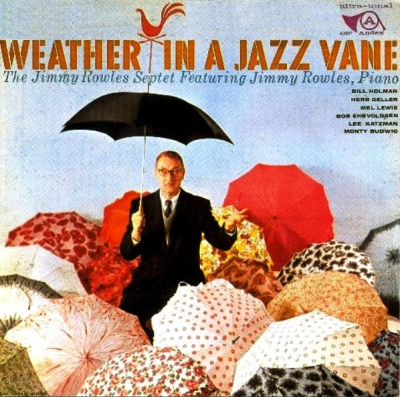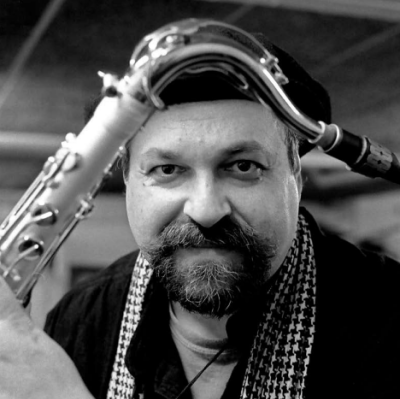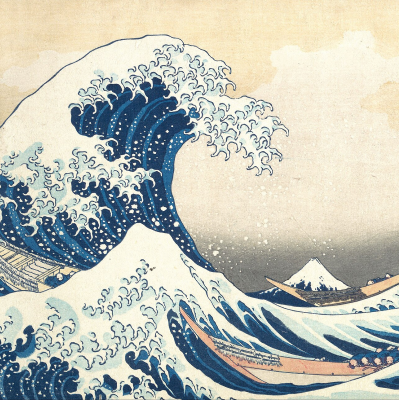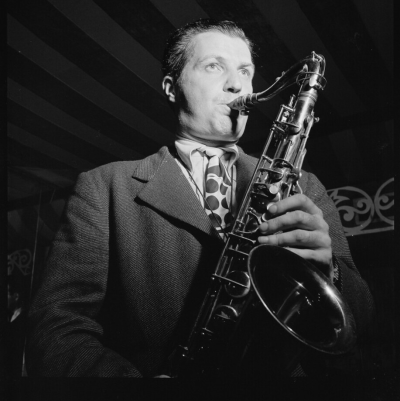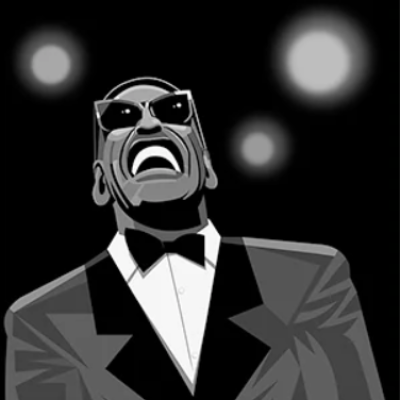Jazz and poetry seem intertwined somehow, not just because of its historical union, but because of their immense opportunity for self-expression. Sascha Feinstein has written extensively about jazz poetry, and most recently he has published Misterioso , a collection of his own work which won the Hayden Carruth Award. Sascha was kind enough to share his thoughts with Jerry Jazz Musician during a July, 2000 interview.
*
JJM Was music a big part of your childhood? What is your first memory of music in your home?
SF My father is a painter and my mother was a painter, weaver, textile designer (she had many talents). But neither really knew music. Mom could sing next to the stereo and miss every note; Dad often has the radio on when he paints, but he doesn’t notice if the station turns to static. Still, they both enjoyed tunes, and, before I was born, my father used to hear jazz giants at famous (and now defunct) NYC clubs like Minton’s. He and a good friend (the painter Thorpe Feidt) introduced me to jazz. I was a teenager, and the music consumed me.
JJM Do you recall the first poem you ever read?
SF I read all of the usual suspects (Shakespearean sonnets, Frost, Browning–the anthologized poems that usually get taught as dead artifacts) but they didn’t knock me in the head like William Carlos Williams’ Paterson, which I found by accident in the house. When I saw his words falling down the page–well, he introduced me to a new world naked.
JJM You say that your work was shaped by your father’s philosophy of painting. Can you share a bit of his philosophy?
SF First, there’s the belief that a work of art (painting, poem, composition–whatever) should become its own self-expression, fully independent of the artist. There are many other, more technical parallels (movement, cadence, focus, even color) that I have found invaluable as a writer, but that first point holds true for everything I’ve written–or at least the work that I consider to be finished.
JJM What do jazz and poetry have in common?
SF There are aesthetic connections, and historical ones, and I tried to discuss both with some depth in Jazz Poetry: From the 1920’s to the Present.
JJM What is the first example of “jazz culture as theme” used in poetry?
SF Carl Sandburg published “Jazz Fantasia” in Smoke and Steel (1920) and that’s probably the first famous poem to mention jazz, but Langston Hughes’ poems in The Weary Blues (1926) first explored with depth the issues of jazz culture.
JJM When did you first connect music with your poetry?
SF I wrote and played jazz in high school, but I didn’t consider the cross-overs until college, when I began to read writers such as Michael Harper and Al Young. Stephen Henderson’s anthology Understanding the New Black Poetry remains an outstanding introduction to jazz and poetry, and I feel personally indebted to that collection.
JJM Do you write poetry while listening to music? If so, please give an example of a piece of music you feel inspirational to your writing.
SF I don’t usually listen to music when I write poetry, though sometimes, if I need to break through with an idea or if I have begun to write about a particular tune, I will spend time listening–really listening–in between writing sessions.
JJM Who was your hero?
SF I had and have too many to name. If pushed, I’d say: The anonymous sculptors of the Ellora Caves in India. Without ego, they created the most astonishing work in the world.
JJM What poet was most inspirational to you when you found yourself having an interest in poetry?
SF Yeats. He’s now human to me, but when I really became interested in poetry, he was mythic–I mean, mythic like Thor.
JJM How inspirational was Jack Kerouac, Allen Ginsberg and other beat writers and the associated culture to your work?
SF I like the energy of the Beats, their revolutionary spirit and how wonderfully they embraced their sense of self, especially one’s most outrageous qualities. But my work has been much more influenced by my teachers (especially David Wojahn and Yusef Komunyakaa) and other contemporary figures (such as William Matthews, Al Young, Hayden Carruth, et al.)
JJM Where and when was the first known “poetry reading” where jazz was also performed? Do you know who the poet was, who the musicians were, and the venue?
SF Kenneth Rexroth claimed he was the first to perform poetry with jazz in the 1930s, and I think Langston Hughes said he performed it in the 1920s. I’m not sure if we’ll ever know with certainty who did it first, but, given that ambiguity, give the credit to Hughes.
JJM You write about such eclectic artists as Sonny Criss to Stan Getz, Jo Jones to Zoot Sims and John Coltrane, Monk to Billie Holiday. I sense an almost spiritual devotion, for example, between you as listener and Sonny Criss as artist–as flawed human being. How do you get emotionally connected to these lives before writing such meaningful poetry about them?
SF I do feel a spiritual devotion to those players, and many others (although I wouldn’t call them either “eclectic” or “flawed”). I heard some of these musicians live–sometimes frequently–and I’ve known many jazz musicians, and I’ve done a good deal of reading about jazz and a great deal of listening. But the main issue is this: I cannot imagine my life without jazz. It is literally unimaginable to me. Monk and Trane and Mingus and tons of others have been the soundtrack to my formative years–not just as a writer, but as a person. Their music brings me back to those years, grounds me in the present, and propels me into the possibilities of the future. So it would be unnatural for me not to write about jazz and jazz musicians.
JJM Is there a common theme involving jazz artists that strikes you? Is it a story of loss? Drug abuse? Beauty? The music itself? In other words, what generally inspires you to write about a particular artist?
SF Depends on the poem. I’m not interested in rewriting liner notes, in merely retelling history just for the sake of telling a straight ahead narrative; if I invoke a famous jazz anecdote, I do so in an effort to raise larger issues. We know, for example, that Coltrane suffered from severe tooth decay as well as heroin abuse, but what allowed him to play through that, and how many people in the world are able to transcend that kind of pain (much less create the astonishing level of artistry that he achieved)? Thinking about the man and listening to his music–both–I am brought to places worth exploring. But that’s just one example among many.
JJM You connect jazz to emotionally charged events in your own personal life. For example, in your poem “December Blues”, your grandmother’s death puts you in a frame of mind that allows you to hear Basie’s “steady push of rhythm” instead of his “bluesy horn section”. Can you explain that?
SF In that particular case, I’m talking about the intensity of rhythm over the harmonics and melody, how bass & drums can lock into our emotional system in unparalleled ways. But I was also making the connection between my grandmother’s loss of memory and Jo Jones’ sad deterioration. I hope in the poem their independent lives act as a commentary on each other.
JJM If you could turn the clock back and read a poem in front of any jazz musician, who would it be and what song would be playing? What poem of yours would you read?
SF I’d like to hear the people I never had a chance to hear–almost anybody already mentioned, plus a host of others–and not read a thing. I’d let them play for as long as they would. Maybe I’d give them a copy of Misterioso.
JJM What jazz event in history do you wish you could have attended?
SF Do you realize how big your questions are? Just one?! Okay: December 24, 1954–the “Bags’ Groove” sessions mentioned in my poem “Christmas Eve.” Miles Davis, Thelonious Monk, Milt Jackson, Percy Heath, and Kenny Clarke. What can I say? I’ll quote Hayden Carruth’s commentary about a session he wished he could have heard, one from 1944:
I druther’ve bin, a-settin there, supernumerary
cockroach i’ th’ corner, a-listenin, a-listenin,,,,,,,
than be the Prazedint ov the Wuurld.
—————————————
Sascha Feinstein is an Associate Professor of English at Lycoming College in Williamsport, PA. His poems have been published in Ploughshares, Crazyhorse, New England Review, Denver Quarterly, North American Review, Green Mountains Review, Missouri Review, and elsewhere. Essays of his have been published in The Southern Review, Paideuma, African American Review, The Wallace Stevens Journal, The Chronicle of Higher Education, and elsewhere. He is the founding editor of Brilliant Corners: A Journal of Jazz and Literature, and co-editor of Jazz Poetry Anthology Vol.1 and Vol. 2, as well as author of A Bibliographic Guide to Jazz Poetry and Jazz Poetry: From the 1920’s to the Present.
Misterioso
*
Sascha Feinstein products at Amazon.com
_______________________________
If you enjoyed this interview, you may want to read our interview with Richard Wright biographer Hazel Rowley.







